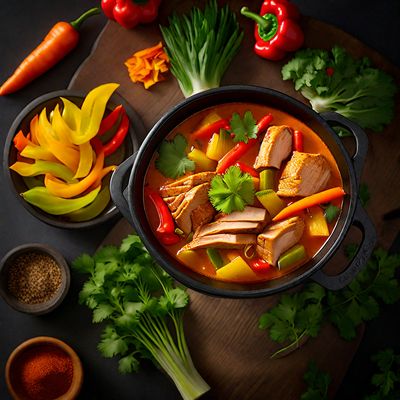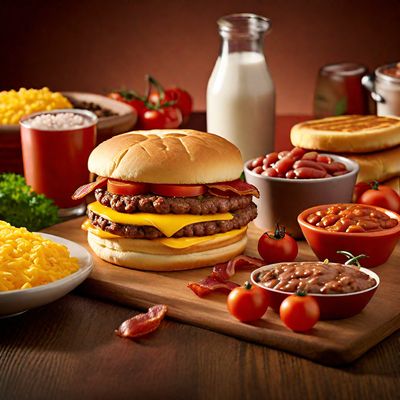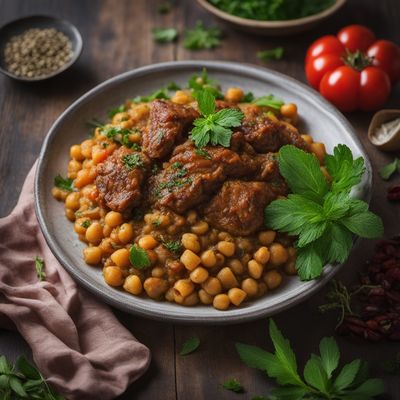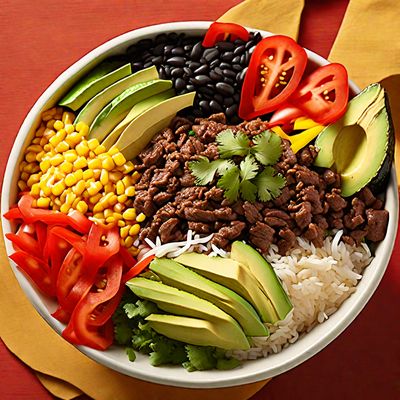
Ingredient
Canned or jarred common beans
Preserved Nutritional Powerhouses
Canned or jarred common beans are cooked and preserved in a liquid, typically water or a lightly seasoned broth. They come in various types, including kidney beans, black beans, chickpeas, and pinto beans. These beans have a tender yet slightly firm texture with a creamy interior. They absorb flavors well, making them suitable for a wide range of dishes, from soups and stews to salads and dips.
Origins and history
Beans have been cultivated and consumed for thousands of years, with evidence of their use dating back to ancient civilizations in the Americas, Africa, and Asia. They have played a significant role in traditional diets and cuisines worldwide, providing a sustainable source of protein and nutrients. Canning and jarring techniques were developed in the 19th century, allowing beans to be preserved for longer periods and making them more accessible to a wider population.
Nutritional information
Canned or jarred common beans are a nutritional powerhouse, rich in plant-based protein, dietary fiber, vitamins, and minerals. They are low in fat and cholesterol and are a good source of folate, iron, potassium, and magnesium. They also contain antioxidants and phytonutrients that contribute to overall health and well-being.
Allergens
Canned or jarred common beans may contain allergens such as soy or wheat, depending on the specific product and processing methods. It is important to read the labels carefully and choose products that are suitable for individual dietary needs and restrictions.
How to select
When selecting canned or jarred common beans, look for products with intact packaging and no signs of damage or bulging. Check the expiration dates to ensure freshness. Opt for low-sodium varieties or rinse the beans before use to reduce sodium content. Organic options are also available for those seeking beans grown without synthetic pesticides or fertilizers.
Storage recommendations
To maintain the quality and shelf life of canned or jarred common beans, store them in a cool, dry place away from direct sunlight. Once opened, transfer any unused beans and their liquid to a covered container and refrigerate. Use them within a few days to ensure optimal flavor and texture.
How to produce
Producing canned or jarred common beans involves harvesting mature beans, cleaning and sorting them, and cooking them in water or a lightly seasoned broth. The cooked beans are then packed into cans or jars, along with the liquid, and sealed to preserve their freshness. The process requires specialized equipment and adherence to strict food safety standards.
Preparation tips
Canned or jarred common beans can be used directly in recipes without any additional cooking. They are a convenient option for adding protein and fiber to soups, stews, chili, and salads. They can also be mashed or blended to create dips, spreads, or fillings for tacos and burritos. Rinse the beans before use to reduce sodium content or adjust the seasoning accordingly.
Substitutions
Canned or jarred common beans can be substituted with dried beans in most recipes. However, the cooking time will be longer when using dried beans, as they require soaking and simmering. Other suitable substitutes include other types of canned or jarred beans, such as chickpeas or black beans, depending on the desired flavor and texture.
Culinary uses
Canned or jarred common beans are widely used in various cuisines around the world. They are a staple ingredient in dishes like chili con carne, refried beans, bean soups, and salads. They can also be used to make vegetarian or vegan burgers, hummus, and bean-based dips. Their versatility makes them suitable for both hearty main courses and lighter side dishes.
Availability
Canned or jarred common beans are commonly available in grocery stores, supermarkets, and online retailers worldwide. They are a pantry staple in many households and are easily accessible throughout the year.
More ingredients from this category
Recipes using Canned or jarred common beans » Browse all

Caribbean Budae Jjigae
Spicy Island Stew: Caribbean Budae Jjigae

Feijoada - Fast Food Style
Quick and Easy Feijoada: A Fast Food Twist on a Brazilian Classic

Mexican Style Samosas
Spicy and Savory Mexican Samosas: A Fusion Delight

Authentic Mexican Taquitos
Crispy Rolled Delights: Authentic Mexican Taquitos

English Breakfast Burger
The Ultimate Breakfast Burger: A Twist on the Classic English Breakfast

Traditional Iranian Abgoosht
Hearty Persian Lamb Stew: A Taste of Iran's Culinary Heritage

Mexican Curry
Mexican Fiesta Curry

Classic English Breakfast
"The Full English: A Hearty Morning Feast"

Taiwanese-style Budae Jjigae
Spicy and Savory Taiwanese Army Stew

Brazilian-style Pasta Carbonara
Feijoada-inspired Pasta Carbonara: A Brazilian Twist on an Italian Classic

New Mexican Bibimbap
Southwestern Fiesta Bowl

Latin American Falafel
Saboroso Falafel: A Latin Twist on a Middle Eastern Classic
